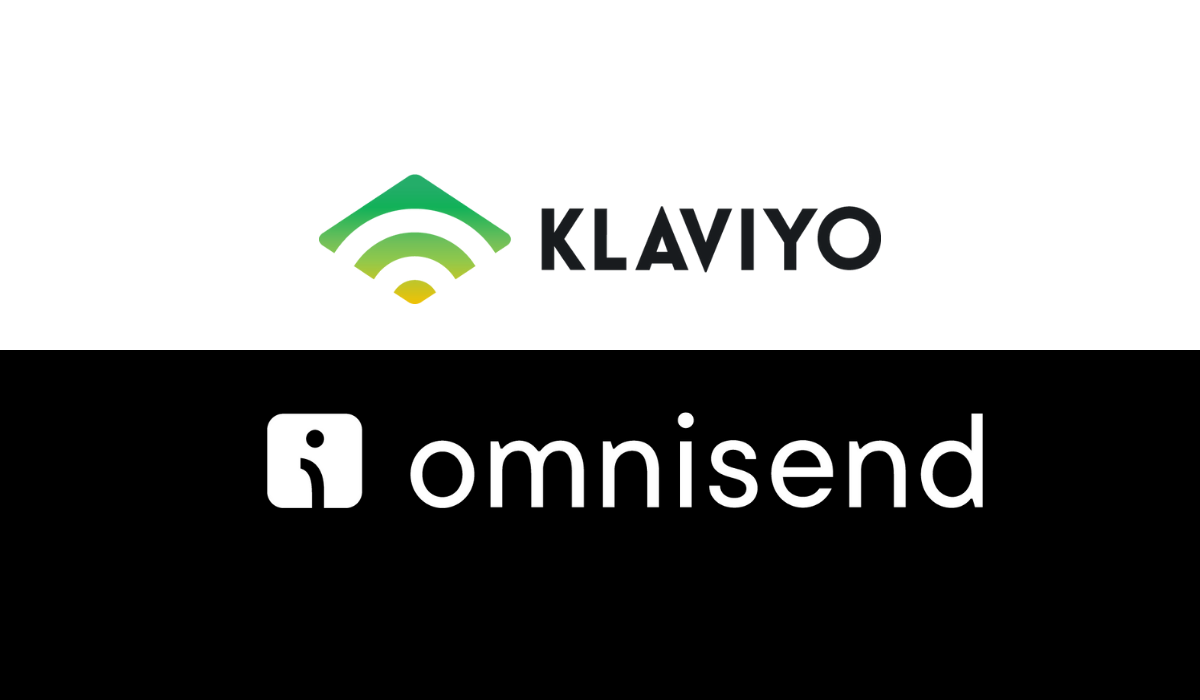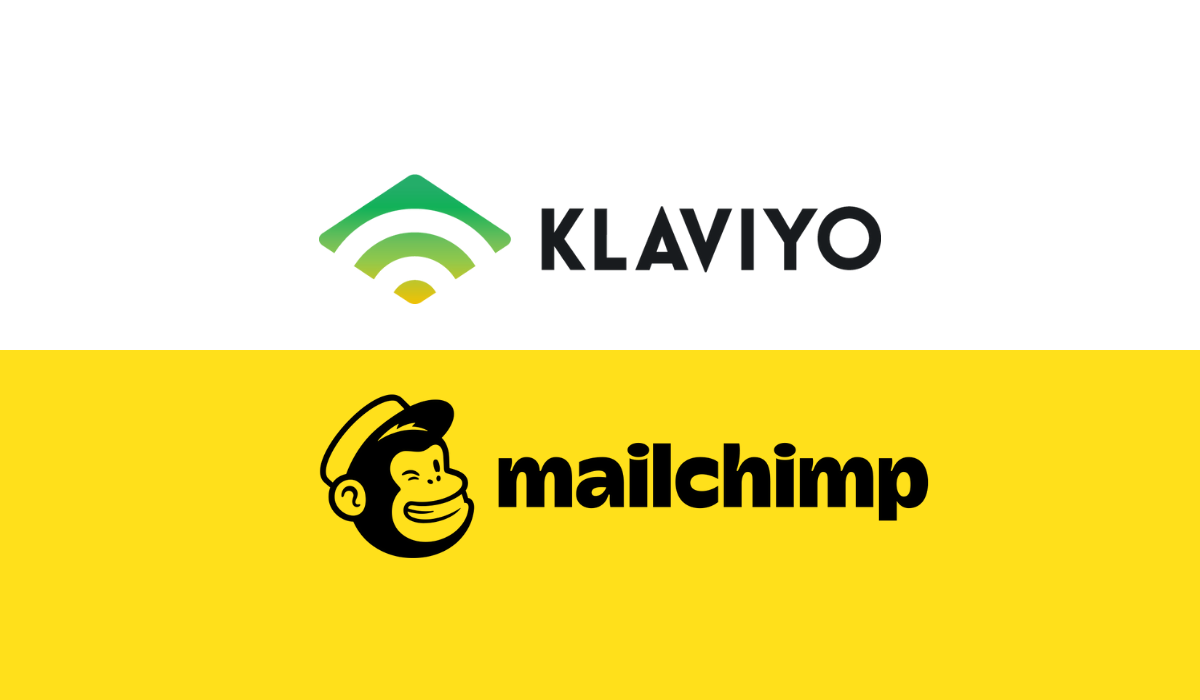Ecommerce email marketing comparison: Klaviyo vs ActiveCampaign
Ecommerce marketing is the act of driving traffic towards a company’s digital storefront—businesses can use social media campaigns, promotional emails, search engine optimisation, and other tactics to achieve this.
One particularly effective method of boosting an ecommerce presence is email marketing software. A sophisticated marketing automation tool that uses relevant data from email subscribers to improve their experience of shopping with your ecommerce business can be incredibly powerful for both short-term sales and long-term growth.
This article will compare two of the most popular ecommerce email marketing services available today—ActiveCampaign and Klaviyo—so that you can understand which one could be the best fit for your business and its marketing needs. Click on one of the links below to jump to that section:
- Klaviyo vs ActiveCampaign: Overview
- Integration and deployment
- Ease of use and dashboard
- Email marketing features
Klaviyo vs ActiveCampaign: Overview
|
|
Klaviyo |
ActiveCampaign |
|
Monthly pricing |
Then plus $10 for every additional 500 contacts. |
There are four plans, which, for 500 email contacts as a minimum, start from:
With every upgrade there are additional features. These prices will be higher for more contacts (for example, the Lite plan jumps to $29 a month for 1,000 contacts). |
|
Integrations |
Offers over a wide variety of integrations, including:
The open API also enables users to create custom integrations. |
Offers a number of native integrations including Facebook, Dropbox, Google Analytics and Magento. Over 800 apps available for integration in total. |
|
Usability |
Easy to use after a bit of a learning curve, with an intuitive interface and plenty of instructional help where necessary to get the most out of the advanced features. |
Requires a bit more prior knowledge to get the most out of the features, but has a large number of email templates and a useful step-by-step guide to the email campaign process. |
|
Audience segmentation |
Supports behavioural and transactional data segmentation and integrates with a number of other sources (including ecommerce platforms and social media) to improve segmentation. |
Data is limited to the latest business activities, so does not include historical information like Klaviyo. However, it does allow you to create lists and segments based on behaviour and transactional characteristics. |
|
Analytics and reporting |
Provides specific analytics that relates to ecommerce, such as return on investment, revenue per email recipient, and more. Supports real-time tracking and predictive analyses. |
An analytics dashboard more focused on customer engagement than Klaviyo, including active contacts and a real-time activity feed. Custom reports available on the Enterprise plan. |
|
A/B testing |
Advanced A/B testing but also has SMS split testing, which can be just as useful. |
An effective click-and-drag A/B testing capability for automation workflows. |
|
Customer support |
Chat and email support for paid subscribers, as well as a community forum and support database of articles, webinars and tutorials for all subscribers. |
Has a range of training resources including a support centre and tutorial videos, as well as email support and live chat. |
Integration and deployment
Both Klaviyo and ActiveCampaign have robust integration features that allow them to natively synchronise with major third-party ecommerce platforms, including Facebook and Shopify. They also both have open APIs that let you integrate custom ecommerce platforms specific to your business.
With ActiveCampaign you can integrate with more than 800 apps covering accounting, analytics, CRM and more. This includes Shopify, WooCommerce and Facebook. Klaviyo, on the other hand, allows you to connect to thousands of integrations covering all aspects related to running an ecommerce business.
There are still differences in how each service uses your data, however. Klaviyo can pull information from a far wider scope of sources, including historical data. This means it is able to tailor a future email marketing campaign with more sophisticated audience segmentation capabilities that only show the most relevant information to customers. In contrast, ActiveCampaign’s data is restricted to the latest customer and marketing activities.
When trying to craft the best way forward for your email marketing, you need access to a range of integrations so you can use the data you gather in the most effective way for your customers. Klaviyo has the edge here, because not only is it designed specifically for ecommerce, but it simply has much more integrations on offer.
Ease of use and dashboard
The Klaviyo email marketing platform might seem to have a steeper learning curve at first glance, but ActiveCampaign appears to need more pre-existing knowledge which could pose problems for beginners.
Any marketing automation software will some time to get used to, though you will always want it to be intuitive. Klaviyo has a simple and easy-to-use interface with clear functions. It also has tutorials and instructions that take you through its key features. Klaviyo also allows you to build emails quickly with next to no coding knowledge, as well as an automation workflow process that can be more difficult to figure out with ActiveCampaign.
The Klaviyo dashboard provides clear and concise at-a-glance ecommerce information relating to total revenue, broken down into automation flows and campaigns from the past seven, 30, 90 or 365 days. In the dashboard you can also find your analytics and lists and segments information.
The ActiveCampaign dashboard is also broken down into automations and campaigns, but also displays stats about contacts. This includes a trend bar, recent activity feed and active contacts tally. This means it pays more attention to customer engagement than Klaviyo, which is focused primarily on sales.
Email marketing features
When putting together an email marketing solution, you will want your tool to be adept in this regard with a wide array of features, and Klaviyo and ActiveCampaign are both built with this in mind. Each platforms offers split testing, segmentation, abandoned cart recovery, contact tagging and more. However, ActiveCampaign’s core function is to act as an email marketing service; this gives it extra features that Klaviyo does not have, such as contact scoring and email triggers.
This is not to suggest that Klaviyo is behind when it comes to this functionality, and it may actually be better for a small business looking to boost their sales. This is because Klaviyo provides specific analytics for ecommerce. This includes seeing a product’s return on investment on any price plan, something which is only available for ActiveCampaign’s higher-tier plans.
It's important to remember that all of Klaviyo’s features have been designed specifically for ecommerce stores, whereas ActiveCampaign was initially used as a CRM. These features not only include the incredibly specific segmentation capabilities and sophisticated automation flows, but also dynamic coupons and product feeds for setting up campaigns.
Related content
Ecommerce email marketing comparison: Klaviyo vs Mailchimp
Ecommerce email marketing comparison: Klaviyo vs Omnisend




